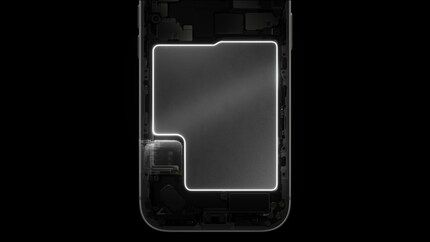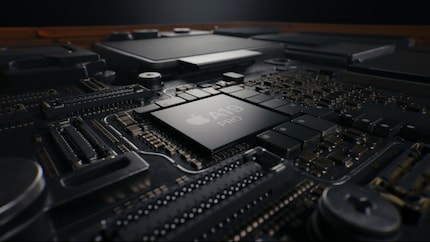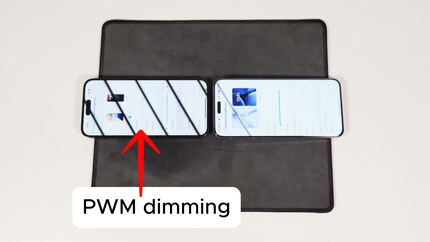
Background information
What to expect from the iPhone event on 9 September
by Samuel Buchmann

Are iPhones about to get cheaper or more expensive? How much better will the battery life be? Which models will still have space for a SIM card? I’ve found the answers so you don’t have to.
In typical Apple fashion, the company was dropping superlatives left, right and centre at its Keynote for the new iPhones. Amid all the excitement, some details either got lost in the noise or failed to get a mention. Here are seven things I noticed when scouring the product data and other sources.
Apple’s tightening up its pricing strategy. Depending on where you’re based and which model you’re interested in, this might be either good news or bad news. Most strikingly, the price difference between the base model and the Pro has widened compared to last year.
This is down to the fact that the new iPhones will all have at least 256 gigabytes of memory. Although the iPhone 17 comes with this upgrade at no extra charge, it’s added an extra 100 dollars to the price of the iPhone 17 Pro in the US. The new base model is the same price as last year’s 256-gigabyte handset. In the same vein, the iPhone Air’s priced at the same level as the 256-gigabyte iPhone 16 Plus it’s set to replace.
In Switzerland, favourable exchange rates mean the new iPhone Pro with the same amount of memory will be 50 francs cheaper. Meanwhile, the base model will be 150 francs cheaper. Here’s a breakdown of the new prices, with the difference between this year’s and last year’s 256-gigabyte versions indicated in brackets.
Apple installed its first ever own-brand modem, the C1, in the iPhone 16e. It’s now giving the iPhone Air an enhanced version, the C1X. Here are the comparisons Apple made during the Keynote event:
That all sounds good. However, as MacRumors has reported, Apple was referring to the performance and efficiency available with sub-6GHz 5G. The newer mmWave 5G technology, which has already been adopted in some major US cities, isn’t supported by either the C1 or the C1X. That’s probably why Apple’s chosen to stick with Qualcomm modems for the iPhone 17 and iPhone 17 Pro. In Europe, mmWave 5G is still basically non-existent.
Some of the new iPhones will still have a physical SIM card slot, others won’t. It’ll really depend on the country you’re buying your handset from:
On the regular iPhone 17, the presence of the SIM card slot won’t impact any other features. However, it’s a different story on the iPhone 17 Pro and Pro Max. These two handsets will have less battery life with a physical SIM card than without. According to Apple, this’ll equate to two hours less video playback – 31 hours instead of 33 for the Pro, and 37 instead of 39 for the Pro Max. In other words, a decrease of 6.5 per cent and 5.4 per cent respectively.
While we’re on the topic of percentages and playback times, we now have the details of the phones’ battery capacities. This is because Apple’s required by EU law to specify them. Theoretically, the figures should refer to the handsets with a SIM card. However, they’re actually in line with data for the eSIM-only models from other regulatory databases.
This supposed runtime boost is significantly greater than the increase in physical battery capacity. There are two reasons for this. First off, both the new SoC (A19 and A19 Pro) and the new wireless chip (N1) require less power for the same tasks than their predecessors. The iPhone Air also features the more efficient C1X modem. Secondly, Apple says that iOS 26 boasts software-related energy efficiency enhancements.
There are two details related to hardware that Apple didn’t mention at the Keynote. While the first is positive, the second could put a frown on a few users’ faces, especially when you look at the way Android smartphones are developing:
The new generation of iPhones will reportedly be more resistant to spyware thanks to Memory Integrity Enforcement (MIE). As Apple explains in a blog, its changes to chips, operating systems and developer tools make memory errors – and the potential for attacks associated with them – more unlikely.
Based on Enhanced Memory Tagging Extension (EMTE), Apple says the technology protects central areas of the system, including the kernel and over 70 processes. Unlike previous solutions, MIE is always on and covers a broader spectrum.
In a beta of iOS 26, there are indications there’ll be a new accessibility setting. Under «Display and text size», you’ll apparently be able to deactivate Pulse Width Modulation (PWM) on the iPhone 17 Pro. It’s unclear whether the same option will be available on other 17th-generation models, but it’s highly likely.
Apple says that if PWM is deactivated, a different method’s used to dim the display. It’s unclear what that method is. Under certain conditions, however, it might reduce display quality at low brightness.
My fingerprint often changes so drastically that my MacBook doesn't recognise it anymore. The reason? If I'm not clinging to a monitor or camera, I'm probably clinging to a rockface by the tips of my fingers.
Interesting facts about products, behind-the-scenes looks at manufacturers and deep-dives on interesting people.
Show allIf you store your data in the cloud anyway, the extra storage won’t be of any use to you. If that applies to you, the cheapest iPhone Pro will cost you 50 francs more, seeing as there’s no 128-gigabyte model. Since memory’s cheap to buy, this will likely have a positive impact on Apple’s profits. The chart below illustrates the way the cheapest Pro model has changed in price over time in US dollars. For a fair comparison between countries, I’ve excluded VAT for Switzerland and Germany.


Battery capacityhas increased by 3.7 per cent in the base model, 18.7 per cent in the Pro and 8.6 per cent in the Pro Max. The iPhone Air’s battery is 32.6 per cent smaller than that of the iPhone 16 Plus. If Apple’s claims are to be believed, it’ll still last just as long. Every other model will see increases in battery life: 36.3 per cent for the base iPhone 17, 22.2 per cent for the Pro and 18.2 per cent for the Pro Max. Mind you, these figures are for the eSIM-only models. In Europe, the progress on battery life in the Pro and Pro Max models isn’t as stark (see section three).

PWM is used to efficiently regulate display brightness. It quickly switches LED or OLED pixels off and on again to control the perceived brightness. Some people find PWM annoying and see flickering at lower brightness levels (linked article in German). As a result, they report experiencing eye strain, headaches and other symptoms.
